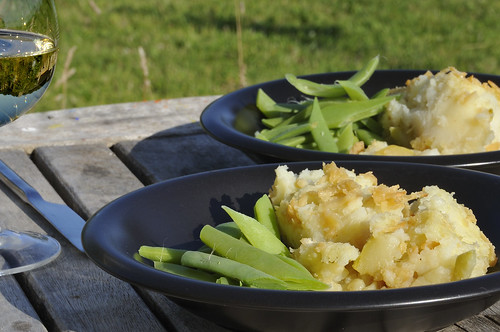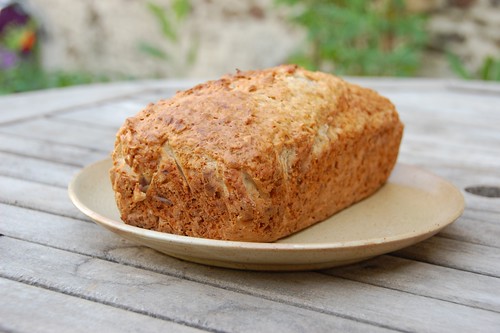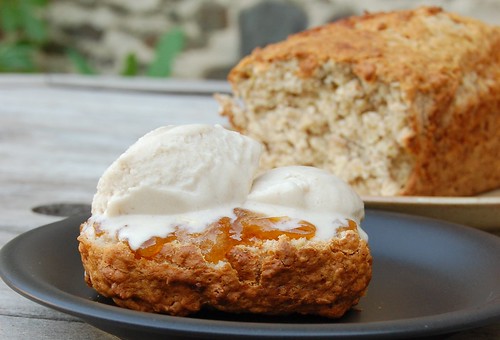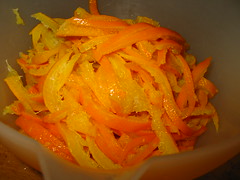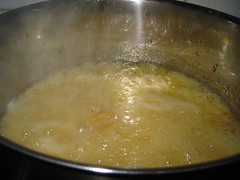
This is hardly cutting edge now, the world and his wife have already heard the news about chickpea cooking liquid, renamed by some as the rather fancier aquafaba, and its unusual ability to whip up like egg whites.
I've tried a few times before to create simple meringues but failed each time during the cooking process - it's easy to make a wonderful fluffy white cloud of sweetness, if you have a good food processor to do the necessary whipping, but a crisp shell of loveliness seemed just out of reach.
Still all cooking is a procedure of refinement - I think my first effort failed because I was using a cheap toaster oven with poor temperature control and my second because I'd tried a different proportion of liquid to sugar and the whipped chickpea juice simply couldn't hold the concentration of sugar. The meringues were weeping before they'd had time to set.
Back in the UK with a better oven, precise scales and a desire to ignore each and every recipe that calls for cups of ingredients the formula seems to have been staring me in the face all along.
It's not perfect yet. I do so want to understand why the chickpea juice works as it does. It's a property of legume proteins and sugars which could probably be recreated without the need to use a by-product of cooking pulses, even if there is a sort of analogy with the dividing of yolks and whites in the traditional egg based methods. I particularly don't like using liquid from commercially canned goods but have so far found the extra effort of cooking dried chickpeas just for the cooking broth a bit too much for me. Perhaps now I've made something I'm happy with that step won't seem like such wasted effort.
So without further ado I give the almost 100% perfect method of making vegan meringues. They don't keep very long so make them the day you intend to serve them and keep them very dry in storage.
100g chickpea cooking liquid (aquafaba). This is about the amount you get drained from a 400g tin of chickpeas.
100g fine granulated sugar. I used caster sugar today but granulated will work.
1tsp vanilla essence.
Heat the oven to 100C. Line a baking tray with parchment paper.
Beat the chickpea liquid with an electric rotary whisk, the egg beating attachment of your food processor or (in my rather froopy French processor) the beating plate until it is stiff and shows sharp peaks. This will take some minutes (unless you have the French thing).
Add the vanilla essence and then little by little the sugar while the machine continues working, pausing between each addition to allow the sugar to be absorbed. It will become glossy but should still be very stiff.
When all the sugar is added you're done. It tastes good like this as a creamy marshmallow-like topping or it could be used as a meringue layer for a pie; baked in the oven until nicely browned and squidgy inside. For meringues spoon or pipe the mixture in small mounds on the parchment. It doesn't spread far so they can be fairly close together. You should get 14-16 pieces. If you make them too thick they may not set properly and so if you want a large single cake for a pavlova smooth it down so it's not more than 15mm thick.
Now I really wanted to say "bake for 100 minutes" to complete my 100% theme but the truth is you need to give them at least 150 mins (2.5 hours) at this very gentle temperature to become crisp and fully set. Allow to cool for another 30 minutes in the oven after you turn it off.
Serve with your favourite toppings.











